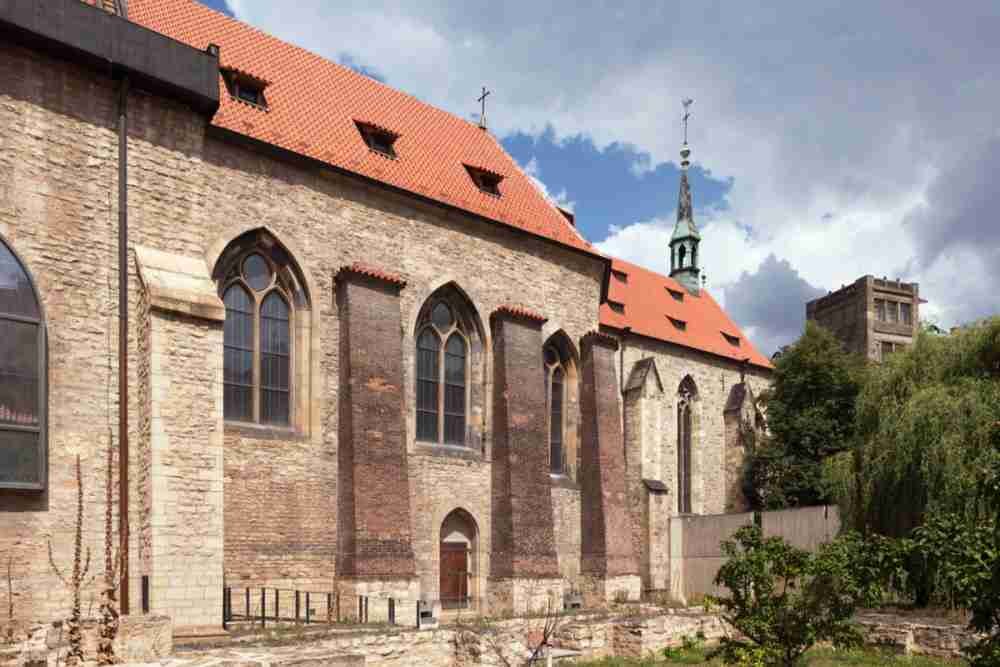Agnes Monastery is a 13th century monastery complex in Prague's Old Town. It is one of the most significant works of early Gothic architecture in Prague.
Agnes Monastery was a double monastery, which, in addition to the women's monastery of the Poor Clares, also housed the men's monastery of the Minorites with the Church of St. Francis.
Since 1963, the Prague National Gallery has been using the building for its exhibitions.
Here we collected all the important information about the Agnes Monastery, including information about the entrance, its history, and address.
What Can I Do at Agnes Monastery?
During a tour of the monastery, it is possible to see all the important premises, which have been open to the public since 1986, including the Oratory of St. Agnes, the Sanctuary of Salvator, and the Church of St. Francis, where the mortal remains of King Wenceslas I are kept.
The exposition in the Lapidarium on the first floor recalls the building history of the monastery and presents valuable artifacts found during the archaeological research.
Afterwards, it is recommended to visit the monastery gardens, which have been reconstructed in their original form and where you can admire about twenty sculptural works by contemporary artists.
Since 2000, on the upper floor of the monastery, there has been a permanent exhibition from the Prague National Gallery on medieval sacral art in Bohemia and Central Europe between 1200 and 1550.
Classical concerts are often held in the music hall in St. Francis Church.
How Do I Get to Agnes Monastery?
Agnes Monastery is located in Prague's Old Town, near the Jewish Quarter and the Old Town Square.
It is easily accessible by metro line B, yellow line, Námĕstí Republiky stop.
From there it is about 10 minutes walk.
Entrance to Agnes Monastery
The Agnes Monastery is open all year round.
For admission prices, please see the following website.
History of Agnes Monastery
The monastery was founded by the Poor Clares in 1233, and construction began the following year. It was built by King Wenceslas I at the request of his sister Agnes. She was the abbess of Bohemia and the monastery is named after her.
Agnes of Bohemia spent almost all her youth in monasteries and although she was engaged for the first time at the age of 3, she never married. She could read and write, which was unusual for a woman of that time, and devoted herself to various acts of service, so the monastery included a hospital.
Over the centuries the monastery has been abandoned, restored, sold, and plundered several times.
In the 20th century it was renovated and today it is one of the most important Gothic buildings in Prague.
Contact
- Address: Anežská 12, Staré Město, 110 00 Prague 1
- Public Transport: Námĕstí Republiky subway station , Yellow Line B, from here it's about 10 minutes on foot
- Opening Hours: For exact opening hours, please refer to the following website.




